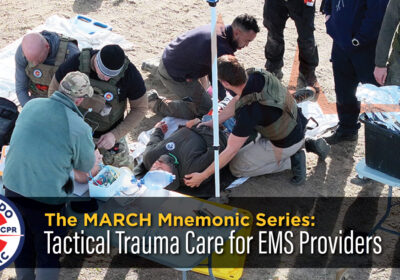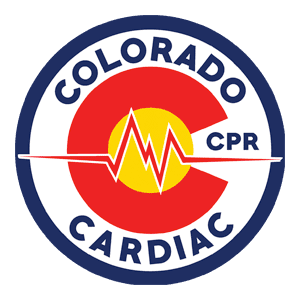First Aid for First Time Eaters

NEWS YOU CAN USE:
Happy Mother’s Day! Celebrations with family will bring many smiles and feelings of gratitude to so many around the globe. What about our new moms who are transitioning their infants to solid foods? This can bring about apprehension, anxiety and nervousness. The question on many minds is as I transition my baby to solid foods what if they choke? This month our blog will be a gift to new moms (and dad’s) that contain basic guidelines to help empower and ease your nerves during this extraordinary time in your baby’s life. This blog is not a substitute for being CPR certified and we always encourage a close relationship with your pediatrician.
What you can do:
There is a difference between gagging and choking. According to Solid Starts, the following signs described in the chart below can determine whether a child is choking or gagging.
Gagging Do NOT Intervene | Choking Perform First Aid |
|---|---|
Eyes Water | Staring with open mouth |
Face Turns Red | Lips become cyanotic |
May Vomit | Gasping for breath |
May make retching sounds (dry heaving) | Silent or making odd sounds |
Coughing | May grab throat or wave arms (older victims) |
Solid Starts (n.d.). Gagging vs Choking. Https://Solidstarts.com/Gagging/. Retrieved April 21, 2025.
According to the American Heart Association the following steps should be taken when an infant under the age of one show signs of choking and first is necessary.
Scenario #1: A Responsive Choking Infant
- Can’t make sounds or no breathing
- Lips may appear cyanotic
- Big scary eyes looking at you
What you DO:
- Give 5 back slaps
- Give up to 5 chest thrusts
- Repeat until the object is dislodged or victim becomes unresponsive
Scenario #2: An Unresponsive Choking Infant
What you DO:
- Shout for help, call 911
- After 2 minutes of care, if you are alone without a mobile device leave the victim to go call for help, If someone else called 911 for you continue with CPR until EMS arrives.
- Place the infant on a hard flat surface lying faceup
- Begin CPR, starting with 30 chest compressions
- Do not check for pulse
- Before delivering 2 breaths, look into the mouth
- If you see a foreign object that can easily be removed, use your smallest digit for removal – no blind finger sweeps
- CPR = 30 compressions: 2 breathes
- Rate of 100-120 bpm
- 1-1 ½” depth
- CPR = 30 compressions: 2 breathes
FIRST AID AWARENESS:
In 2004, with the passing of the Food Allergen Labeling and Consumer Protection Act (FALCPA), the Food Safety and Inspection Services declared 8 major foods as accounting for 90% of allergic reactions. This includes milk, eggs, fish (such as bass, flounder, cod), crustacean shellfish (such as crab, lobster, shrimp), tree nuts (such as almonds, walnuts, pecans), peanuts, wheat and soybeans. In 2021, with the passing of the Food Allergy Safety, Treatment, Education, and Research Act (FASTER), sesame was added to the list as the 9th food allergen (U.S. Food & Drug Administration).
The foods with the least allergy responses are squash, pears, apricots, peaches, barley, lamb. Experts suggest introducing foods that might cause an allergic reaction in small amounts while at home rather than dining out. If there is no reaction, increase the amount of food little by little. Remember, breast milk provides antibodies to help build a baby’s immune system while decreasing their chances of food allergies.
EMERGENCY PREPARDNESS:
An epinephrine pen delivers medication prescribed by your pediatrician to stop severe allergic reactions and buys you time (approx. 10 minutes) to get your baby to a hospital for further necessary treatment. Below is an overview of how to deliver this life saving medication (American Heart Association):
- Follow the instructions on pen or from physician
- Hold the pen in your fist without touching the end where the needle comes out
- Take off the safety cap
- Give the injection through clothes or bare skin
- Hold leg firmly in place before and during the injection
- Place the orange tip against the outside of the persons thigh ½ way between hip and knee at a right angle
- Swing and push the auto injector firmly until it “clicks”. The click signals that the injection has started
- Hold your injection pen 3 to 10 seconds
- Pull the pen straight out of leg
- Rub the injection site for about 10 seconds
- Note the time of injection
- Call 911 – Put your cell phone in speaker mode
- Dispose used epi-pen in a red container or give to medical professional
- Do not drive an infant to hospital in personal car
ADDITIONAL INFORMATION:
- For American Heart Association BLS -CPR, First Aid, PALS certification training contact our office at 720.639.2623 or www.3cpr.org
- For Mental Health First Aid certification or mental health workplace workshops contact: Roxanne at Rox@3cpr.org
- For tailored Health and Wellness Lunch -n-Learns or presentations contact: Roxanne at Rox@3cpr.org
- When enrolling for a CPR, First Aid or PALS class, use the promo code “3CPRBLOG” for a 15% discount on most of our classes!
BLOG WRITTEN BY:
Sophie Mabry, M.A.,
ACSM Exercise Physiologist, EIM II, Certified Health and Wellness Coach, Sports Nutritionist, Mental Health First Aid Responder, BLS CPR and First Aid Instructor, former EMS professional.
REFERENCES:
- American Heart Association. Basic Life Support Provider Manual (International English). American Heart Association, 4 Nov. 2020. Pp. 47-58.
- Besler, L., MS,RD,LD,CDE. . Children’s Nutrition. BarCharts Inc. 2011.
- Food Safety and Inspection Service. (2024, March 21st). Food Allergies: The “Big 9”. U.S. Department of Agriculture. https://www.fsis.usda.gov/food-safety/safe-food-handling-and-preparation/food-safety-basics/food-allergies-big-
- Järvinen, K. M., Martin, H., & Oyoshi, M. K. (2019). Immunomodulatory effects of breast milk on food allergy. Annals of allergy, asthma & immunology : official publication of the American College of Allergy, Asthma, & Immunology, 123(2), 133–143. https://doi.org/10.1016/j.anai.2019.04.022
- Solid Starts (n.d.). Gagging vs Choking. Https://Solidstarts.com/Gagging/. Retrieved April 21, 2025.
- U.S. Food & Drug Administration. Food Allergies. Department of Health and Human Services. https://www.fda.gov/food/nutrition-food-labeling-and-critical-foods/food-allergies.
Related Posts

The MARCH Mnemonic Series – Tactical Trauma Care for EMS Providers
When seconds count and conditions are unpredictable, the MARCH mnemonic. provides a clear, evidence-based sequence…

Tourniquets: From Controversy to Cornerstone in Bleeding Control
The use of tourniquets has transformed modern trauma care. Once considered a last resort, they…

Altitude Sickness: What First Aiders Want You to Know Before Visiting Denver
Denver, Colorado, is famous for its sunshine, mountain views, and “Mile High City” nickname. But…
